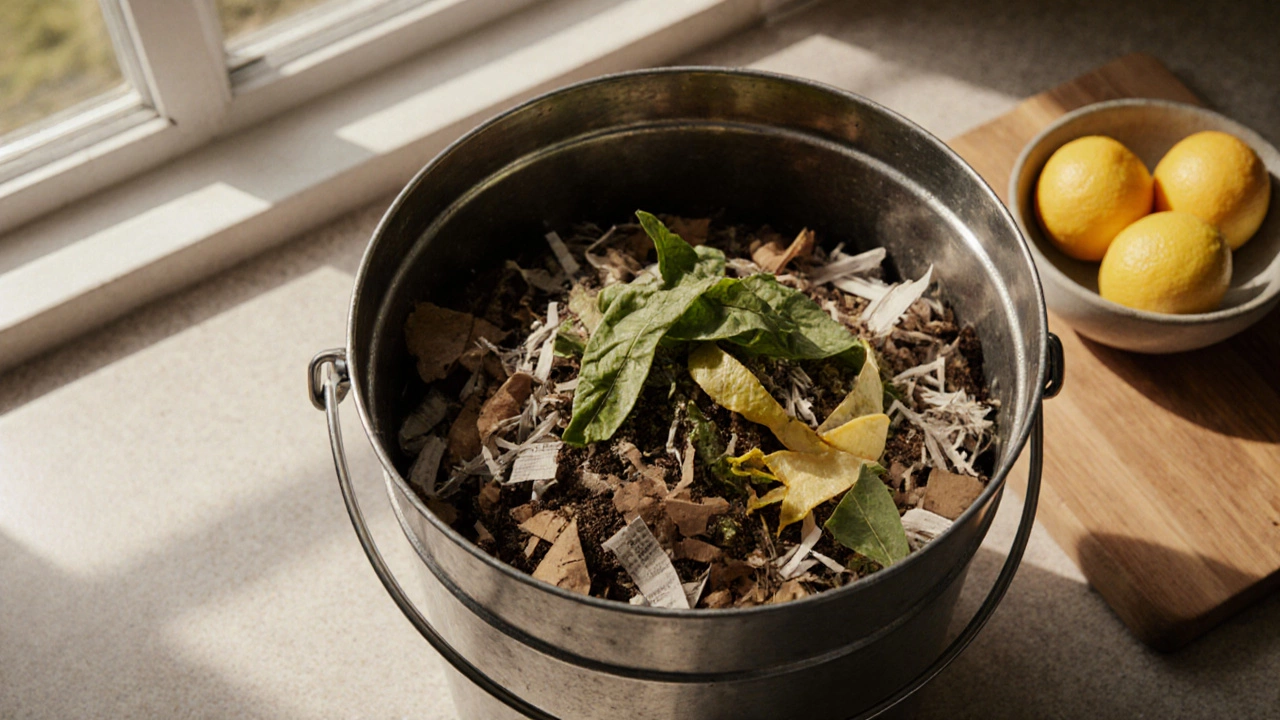Learn the four key ingredients-carbon-rich browns, nitrogen-rich greens, oxygen, and moisture-needed for fast, odor‑free composting and a nutrient‑rich garden amendment.
Compost Ingredients: What Works Best for Indian Gardens
When you're building compost ingredients, the raw materials that break down into nutrient-rich soil. Also known as organic matter, it's the foundation of healthy gardens without chemicals. In India’s varied climate—from dry summers to heavy monsoons—not all compost recipes work the same. What grows well in Kerala won’t thrive in Rajasthan unless you tweak the mix. The right compost ingredients turn kitchen waste into black gold, but only if you balance what goes in.
Start with the basics: green materials like vegetable peels, tea leaves, and fresh grass clippings add nitrogen. These break down fast and heat up the pile. Then add brown materials—dry leaves, crushed cardboard, or coconut coir—to balance it out. Too many greens? Your compost smells. Too many browns? It won’t break down. The sweet spot is about 3 parts brown to 1 part green. In Indian homes, banana peels, rice husks, and cow dung are gold. Cow dung especially? It’s packed with microbes that speed up decay. You don’t need fancy bins. A simple pile in the corner of your terrace, covered with jute, works better than a plastic tumbler in humid cities like Chennai.
Some things you think are compostable? Avoid them. Dairy, meat, oily food, and citrus peels attract pests and slow decomposition. In India’s warm climate, flies and rats are already a problem—don’t make it worse. Instead, use eggshells (crushed), coffee grounds, and dried flower petals. Even newspaper (non-glossy) is fine. If you’re short on space, try vermicomposting. Red worms eat kitchen scraps and turn them into castings faster than any pile. A bucket under your sink can handle your daily waste. No smell. No mess. Just rich soil in 6–8 weeks.
And don’t forget the soil itself. If your garden soil is clay-heavy (common in Maharashtra or Tamil Nadu), adding compost made from dry leaves and cow dung loosens it. If it’s sandy (like in Rajasthan), compost holds water like a sponge. The best compost isn’t about one magic ingredient—it’s about mixing what’s local, what’s free, and what breaks down fast. You’re not just recycling waste. You’re rebuilding your soil, one peel at a time.
Below, you’ll find real guides from Indian gardeners who’ve cracked the code on compost—what to add, what to skip, and how to fix stinky or slow piles without spending a rupee. No theory. Just what works in your backyard, balcony, or terrace.
